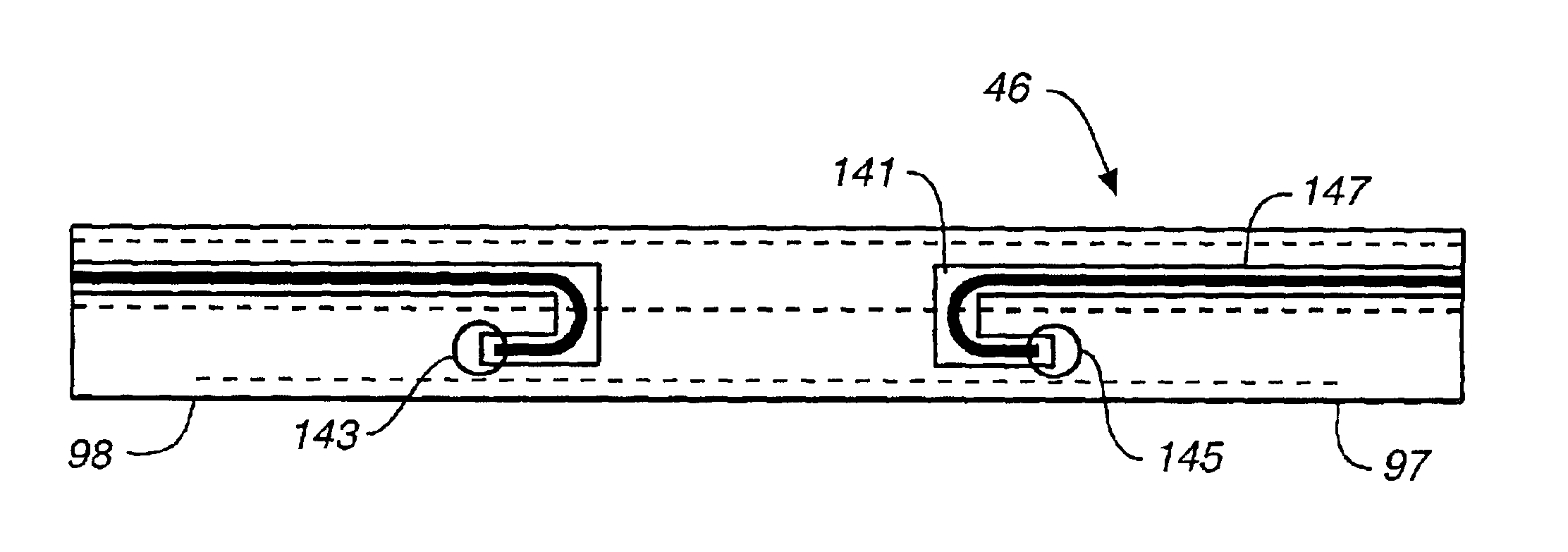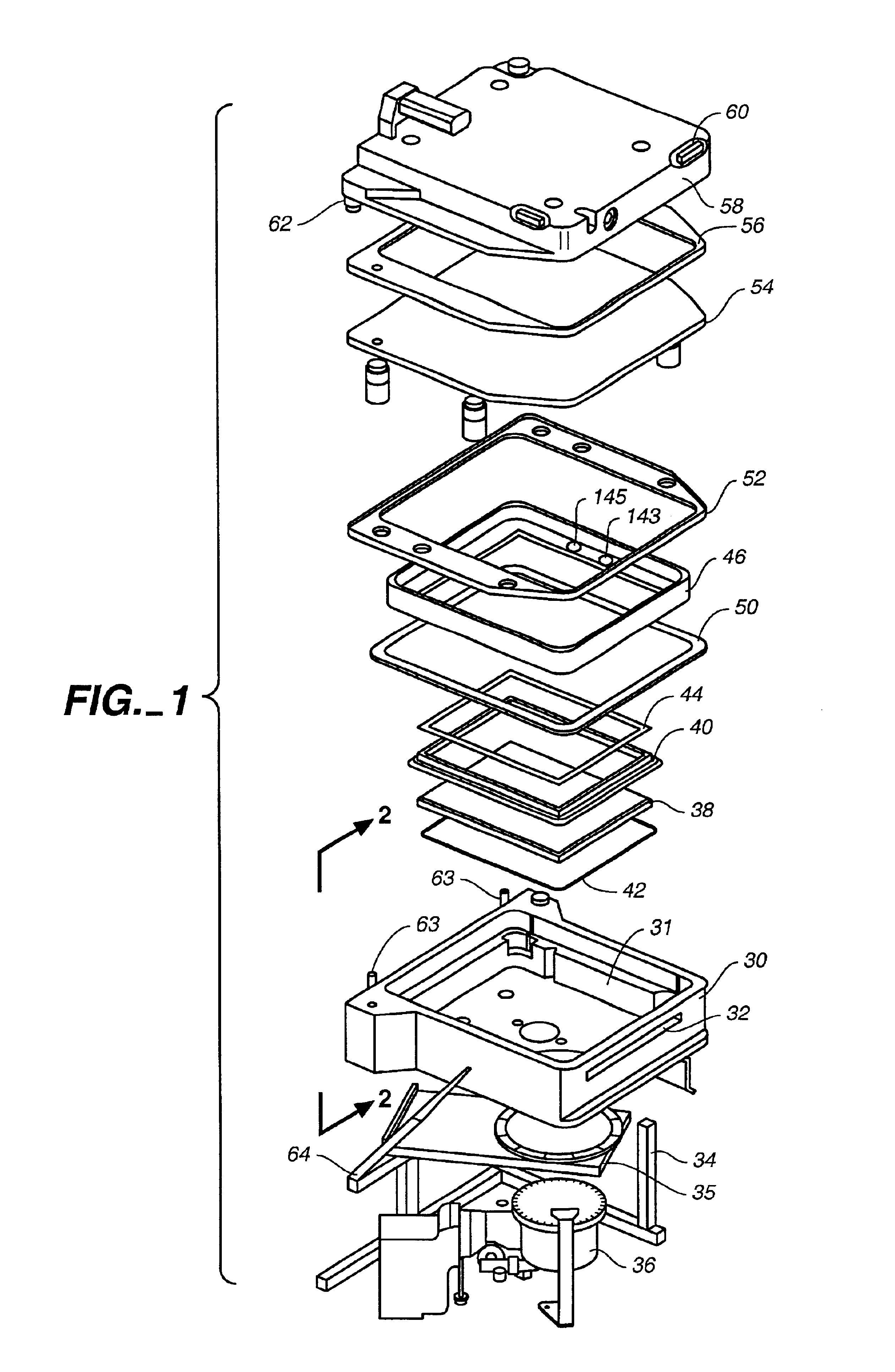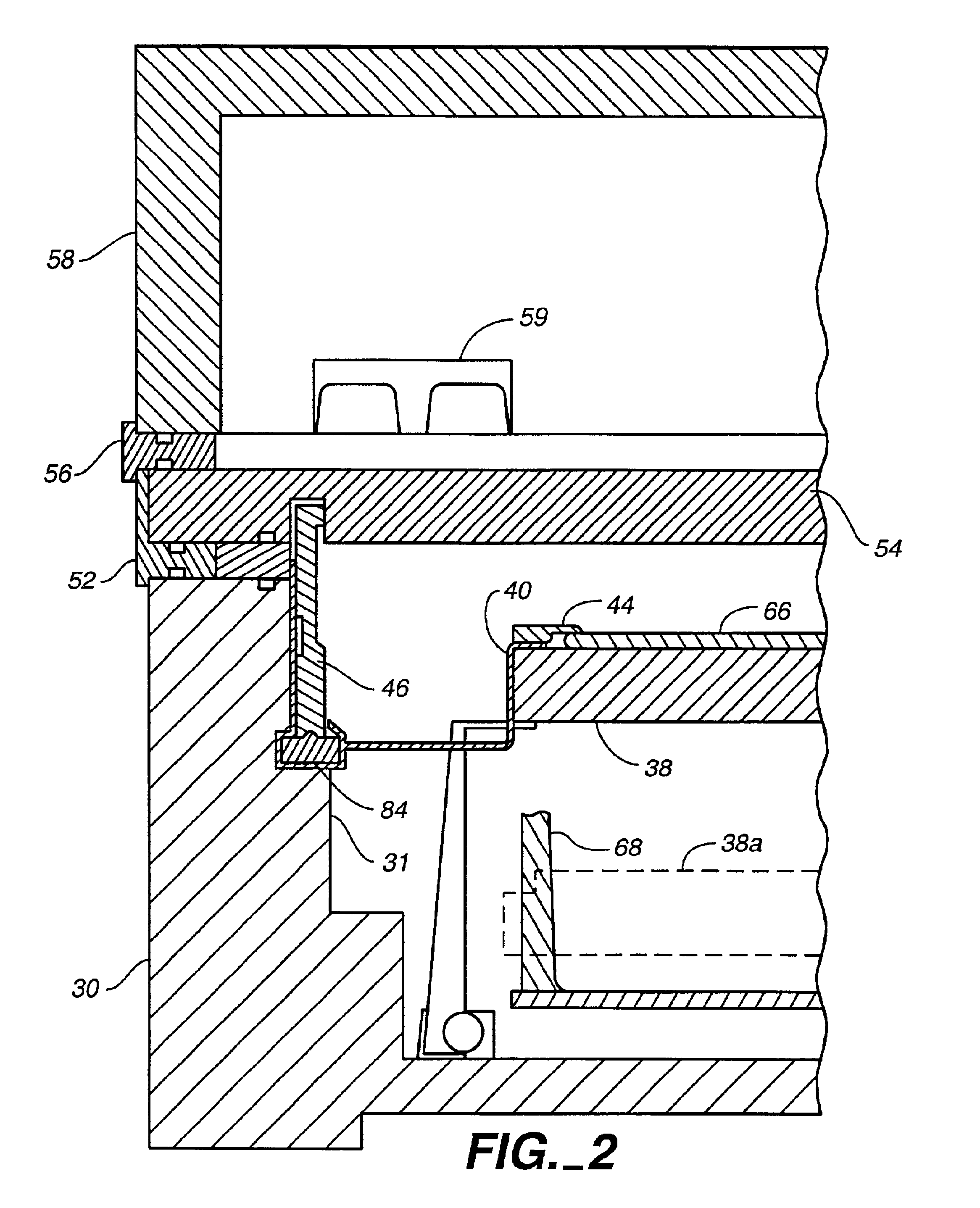Heated and cooled vacuum chamber shield
- Summary
- Abstract
- Description
- Claims
- Application Information
AI Technical Summary
Problems solved by technology
Method used
Image
Examples
Embodiment Construction
)
[0030]FIG. 1 shows an exploded view of the pieces which are generally associated with a PVD sputtering processing chamber. More details are presented in U.S. Pat. Nos. 5,487,822, 5,336,585 and 5,362,526 all of which are owned by the assignee of the present application and are incorporated herein by reference in their entirety.
[0031]A processing chamber 30 having an inside processing chamber wall 31 and a slit valve 32 is supported on a frame 34 leading to a gate valve 35 and a cryogenic vacuum pump assembly 36. Processing chamber 30 contains a susceptor or sputtering pedestal 38 supported above a fin plate 42. Sputtering pedestal 38 is surrounded by a sputtering pedestal apron 40. A substrate (not shown in FIG. 1) may be supported on sputtering pedestal 38. A shadow frame 44 covers the edges of the substrate during processing to prevent sputter-deposited material from depositing at the edge and on the back side of the substrate. The substrate is supported on susceptor pedestal 3B f...
PUM
| Property | Measurement | Unit |
|---|---|---|
| Temperature | aaaaa | aaaaa |
| Electrical conductor | aaaaa | aaaaa |
| Heat | aaaaa | aaaaa |
Abstract
Description
Claims
Application Information
 Login to View More
Login to View More - R&D
- Intellectual Property
- Life Sciences
- Materials
- Tech Scout
- Unparalleled Data Quality
- Higher Quality Content
- 60% Fewer Hallucinations
Browse by: Latest US Patents, China's latest patents, Technical Efficacy Thesaurus, Application Domain, Technology Topic, Popular Technical Reports.
© 2025 PatSnap. All rights reserved.Legal|Privacy policy|Modern Slavery Act Transparency Statement|Sitemap|About US| Contact US: help@patsnap.com



